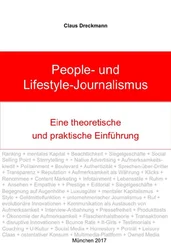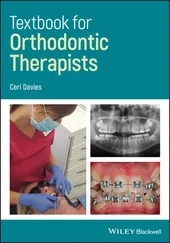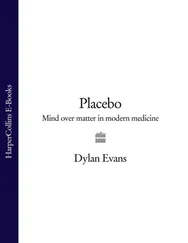1 ...8 9 10 12 13 14 ...31 12 Ley, S.H., Ardisson Korat, A.V., Sun, Q. et al. (2016). Contribution of the nurses' health studies to uncovering risk factors for type 2 diabetes: diet, lifestyle, biomarkers, and genetics. Am. J. Public Health 106 (9): 1624–1630.
13 Li, Y., Gu, M., Jing, F. et al. (2016). Association between physical activity and all cancer mortality: dose‐response meta‐analysis of cohort studies. Int. J. Cancer 138 (4): 818–832.
14 Mahabir, S., Willett, W.C., Friedenreich, C. et al. (2018). Research strategies for nutritional and physical activity epidemiology and cancer prevention. Cancer Epidemiol Biomarkers Prev. 27 (3): 233–244. doi: 10.1158/1055‐9965.EPI‐17‐0509.
15 Mensah, G.A., Roth, G.A., and Fuster, V. (2019). The global burden of cardiovascular diseases and risk factors: 2020 and beyond. J. Am. Coll. Cardiol. 74 (20): 2529–2532.
16 Nassis, G.P. and Sidossis, L.S. (2009). Thighs and heart disease. Exercise, muscle mass, and insulin sensitivity. Br. Med. J. 339: b4249.
17 National Cancer Institute. (2017). Tobacco. www.cancer.gov/about‐cancer/causes‐prevention/risk/tobacco.
18 NCD Risk Factor Collaboration. (2016). Trends in adult body‐mass index in 200 countries from 1975 to 2014 : a pooled analysis of 1698 population‐based measurement studies with 19.2 million participants. Lancet 387 (10026): 1377–1396.
19 Popkin, B.M., Adair, L.S., and Ng, S.W. (2012). Global nutrition transition and the pandemic of obesity in developing countries. Nutr. Rev. 70 (1): 3–21.
20 Rehm, J., Soerjomataram, I., Ferreira‐Borges, C., and Shield, K.D. (2019). Does alcohol use affect cancer risk? Curr. Nutr. Rep. 8 (3): 222–229.
21 Schols, A. and Sidossis, L.S. (2011). Abnormal body composition and early biomarkers of metabolic complications. Curr. Opin. Clin. Nutr. Metab. Care 14 (6): 517–519.
22 Schwenk, R.W., Vogel, H., and Schurmann, A. (2013). Genetic and epigenetic control of metabolic health. Mol. Metab. 2 (4): 337–347.
23 Shekhar, H.U., Chakraborty, S., Mannoor, K., and Sarker, A.H. (2019). Recent advances in understanding the role of genomic and epigenomic factors in noncommunicable diseases. Biomed. Res. Int. 2019: 1649873.
24 van der Valk, E.S., Savas, M., and van Rossum, E.F.C. (2018). Stress and obesity: are there more susceptible individuals? Curr. Obes. Rep. 7 (2): 193–203.
25 World Health Organization. (2017). Cardiovascular diseases (CVDs). https://www.who.int/news‐room/fact‐sheets/detail/cardiovascular‐diseases‐(cvds).
26 Yu, E., Rimm, E., Qi, L. et al. (2016). Diet, lifestyle, biomarkers, genetic factors, and risk of cardiovascular disease in the nurses' health studies. Am. J. Public Health 106 (9): 1616–1623.
CHAPTER 3 Components of an Unhealthy Lifestyle
Unhealthy Diets
Research has long linked specific nutrients (e.g., refined carbohydrates and added sugars, saturated and trans fatty acids [TFAs] and sodium), foods and food groups (e.g., sweets, sugary soft drinks, red meat, and processed meats), and specific dietary patterns (e.g., Western diet) with a number of diseases and conditions: CVD, cancer, diabetes, hypertension, liver and gallbladder diseases, and obesity. Moreover, diets low in whole grains, fruits and vegetables, nuts and seeds, and ω‐3/ω‐6 fatty acids seem to be the leading dietary risk factors of mortality the last two decades.
Regarding specific nutrients, high TFA intake increases the risk of all‐cause mortality, total CHD, and CHD mortality. Historically, studies on saturated fatty acids (SFAs) suggest positive associations with total and low‐density lipoprotein (LDL) cholesterol, coagulation markers, insulin resistance, and inflammation. Some studies have suggested that a long‐term diet high in SFAs could increase the risk for CVD and some cancers. However recent data do not fully support a direct connection between SFA and CVD.
An increased amount of dietary salt is an important risk factor for the development of hypertention and increased overall CVD risk. On the other hand, there is an inverse relation between fiber intake and all‐cause mortality. According to the WHO, approximately 3% of deaths worldwide are attributable to low fruit and vegetable consumption. Insufficient intake of fruits and vegetables increases the risk for gastrointestinal cancer, ischemic heart disease, and stroke. Most of the benefit of consuming fruits and vegetables comes from reduction in CVD risk, but fruits and vegetables also prevent cancer. Moreover, high consumption of red and processed meat has been associated with all‐cause mortality and with several types of cancer, diabetes, and CVD mortality. However, the consumption of whole‐grain cereals has been linked to improvements of metabolic syndrome (MetS) and its components: obesity, dyslipidemia, hypertension, and hyperglycemia or T2DM. According to the World Cancer Research Fund, up to 40% of cancers can be prevented by improving diet and increasing physical activity.
Therefore, shifting our diet from animal‐based foods to predominantly plant‐based foods may result in better health outcomes. In the following sections, we will focus on the most important components of an unhealthy diet.
Experimental studies have demonstrated that excess caloric intake can adversely affect insulin sensitivity and plasma glucose, insulin, and triglyceride levels, all positively linked to obesity. Even 1 week of hypercaloric feeding may result in elevated fasting plasma insulin, glucose, and triglyceride levels and to exacerbated insulin response, without any weight gain. These findings suggest that the observed metabolic disturbances during excess caloric intake are not necessarily linked to obesity.
Observed metabolic disturbances during excess caloric intake are not necessarily linked to obesity.
Epidemiological data suggest that intake of energy‐dense foods (i.e., more than 225–275 kcal/100 g of food), consumers’ exposure to large serving sizes, and overeating may contribute to obesity and, therefore, increase the risk for the development of chronic diseases. Overeating has also been associated with increased aging rate and decreased lifespan. According to the “rate‐of‐living/oxidative damage” theories, lifespan extension is linked to low energy metabolism, low reactive oxygen species (ROS) production rates, low molecular damage, and slow aging. Long‐term caloric restriction studies in humans show persistent metabolic slowing accompanied by reduced oxidative stress, evidence supporting the “rate‐of‐living/oxidative damage” theories of mammalian aging.
It is now generally accepted that the effects of SFAs on CVD depend mainly on what replaces them in the diet. For example, the substitution of omega‐3 polyunsaturated fatty acids (PUFAs) and monounsaturated fatty acids for SFAs might reduce CHD risk. On the other hand, replacing SFA with carbohydrates has mixed results over the CVD risk, while there is some evidence suggesting that whole grains but not refined carbohydrates reduce CVD risk.
It is now generally accepted that the effects of SFA on CVD depend mainly on what replaces them in the diet.
In populations following Western dietary habits, it has been shown that when 5% of the energy derived from SFAs is replaced by PUFAs, LDL cholesterol concentrations decrease. In turn, this change can generate a decrease in CHD occurrence and deaths. Males from the Health Professionals Follow‐up Study and females from the Nurses' Health Study (NHS) were followed prospectively for 24–30 years; people with the highest consumption of PUFAs had 20% lower CHD risk compared to those who consumed a diet low in PUFAs. Notably, for every 5% decrease of energy coming from SFAs, the CHD risk decreased by 25% when an equal amount of energy was replaced by PUFAs. Similarly, combined scientific data from randomized controlled trials (RCTs) have demonstrated that individuals with increased PUFA intake, instead of SFAs, were 20% less likely to develop CHD, compared with those following a higher SFA diet. The protective effect against CHD incidence was 10% for every 5% of energy replacement by PUFAs, and the magnitude of this beneficial effect was contingent on the duration of the intervention.
Читать дальше












